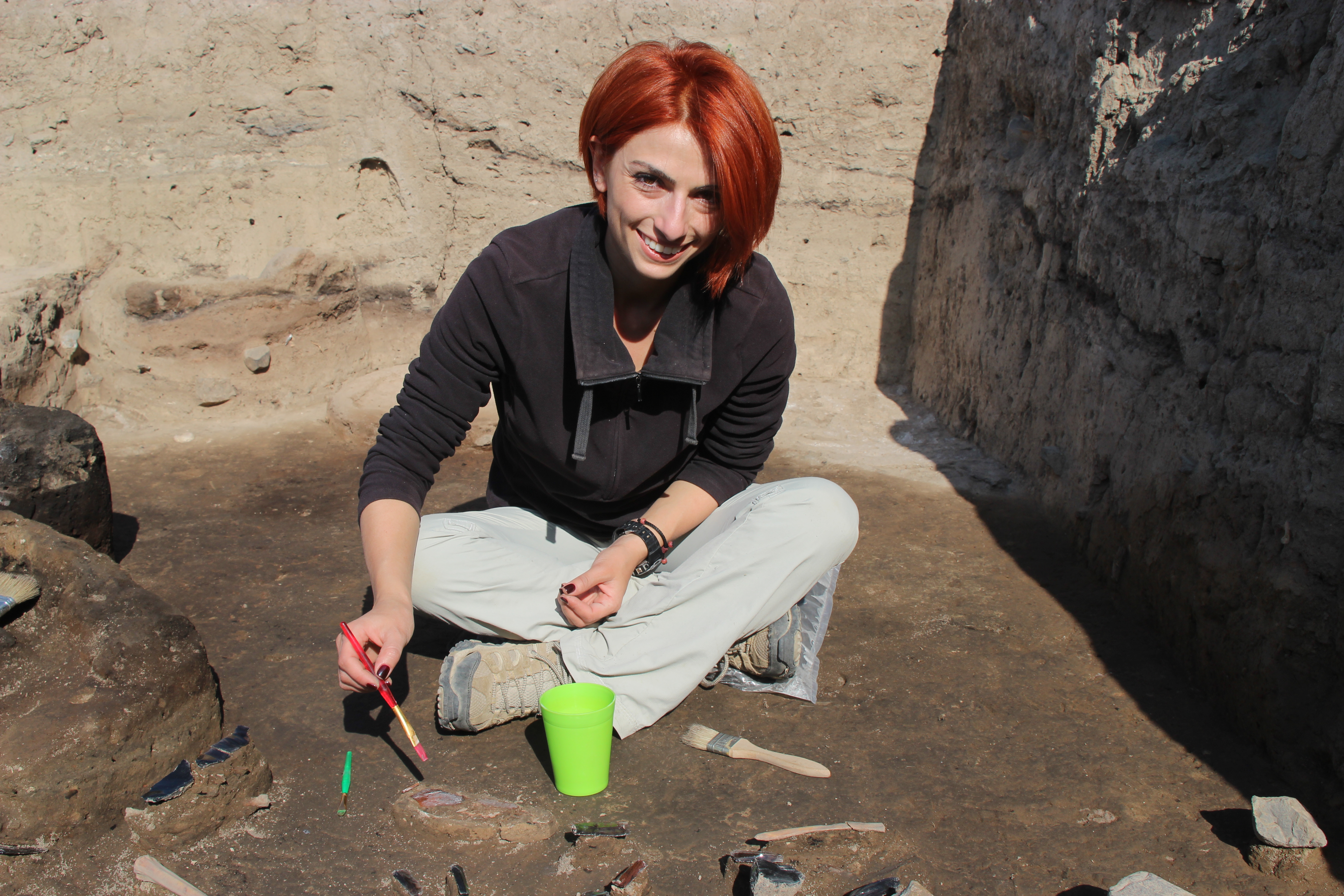June 1, 2023

To celebrate our 2023 Fellowship recipients, we will be spotlighting each of our winners in news stories on the AIA website. We have reached out to our winners to learn about their projects and about their experiences in archaeology. We’re excited for you to meet Kristine Martirosyan-Olshansky, one of the AIA-NEH Grant recipients for this year.
AIA-NEH Grant for Post-fieldwork Research and Publication recipient: Kristine Martirosyan-Olshansky (she/her); The University of California, Los Angeles (Cotsen Institute of Archaeology)
What is your fellowship project about?
The Masis Blur Archaeological Project is a multi-year field and laboratory research project exploring how the first farming communities arose in the Ararat Plain of Armenia about 8000 years ago. Through the study of the plant remains that the inhabitants left behind, we will provide a detailed view of how this early farming community adopted nonlocal plants such as wheat and barley into the rhythm of their daily lives.
How did you get your start in archaeology?
My path to archeology has been very irregular. When I was young, I was very invested in becoming a medical doctor. I entered into undergraduate education as a pre-Biology, along the way I discovered that I truly enjoyed studying languages (Latin, ancient Greek, Russian). Halfway into my undergraduate education I switched to a double-major in Classical Languages and Literatures/Russian Language and Literature and planned on perusing languages at a graduate level. My senior year I took a class on Greek history and found myself very drawn to archaeology, alas I was in my final year. The following year I spent reading about archaeology, taking classes at my local community college, and finding an archaeological field project that would take me on as a volunteer. I was offered to go to Armenia as a volunteer to dig in a Copper Age period cave site where I fell in love with the discipline, and I have never looked back!
Where in the world has archaeology brought you (fieldwork, research, conference travel, etc.)?
While my research projects have primarily been in Armenia, I have also done fieldwork in Israel, Egypt, and Peru.
What is one of the most memorable things that has happened to you in the field?
I was part of a very small team of archaeologists excavating the Areni-1 Cave site in Armenia when we excavated what later was shown to be the world’s oldest (to-date) wine press and the oldest leather shoe, 6000 years old and 5500 years old respectively. The publication of both discoveries made headlines across the world, and it was quite exciting to see our project on major news outlets both in the US and in Europe.
How has the AIA contributed to your success/professional goals?
The AIA-NEH grant will allow us to complete the analysis of archaeological plant remains from Masis Blur, one of the earliest farming sites (ca. 6200 cal BCE) in the southern Caucasus. Full analysis of the archaeobotanical remains will provide a detailed view of how this early farming community adopted non-local cultigens such as wheat and barley into their daily lives. The integration of the results of archaeobotanical research with photogrammetry, GIS, and contextual data will permit fine-grained analysis of depositional contexts to identify whether there are differences in use-spaces, and therefore, how individuals within this small community patterned their social lives. We will also hire undergraduate and graduate students from UCLA to assist as with the project, which will provide an opportunity to assist in training new young scholars in current archaeological techniques.
Is there anything else you want to share?
The Masis Blur Archaeological Project is open to new collaborations, and we are happy to make our datasets (archaeobotanical, zooarchaeological, lithic, etc.) available to graduate students and young scholars for research and publication. We also are able to accept a few volunteers and encourage all those interested in the project to contact us.
Learn more about what Fellowship opportunities are available through the AIA or reach out to our Director of Programs, Meredith Langlitz, at mlanglitz@archaeological.org.